Abstract
The coiling of excised pea tendrils in response to mechanical stimulation is accompanied by an increased efflux from their cut bases of electrolytes and label from previously absorbed 14C-acetate and 14C-sucrose. The major excreted cation is H+; H+ loss is potentiated by pretreatment with benzoic acid, which also leaves the tendrils during coiling.
Label from previously absorbed tritiated water is excreted during coiling, mainly from the ventral side of the tendril, which contracts in the initial phase of coiling. Such label does not pass from the ventral to the dorsal side. Similarities between this and other rapidly moving systems in plants are surveyed and a hypothesis to explain turgor movements is advanced.
Full text
PDF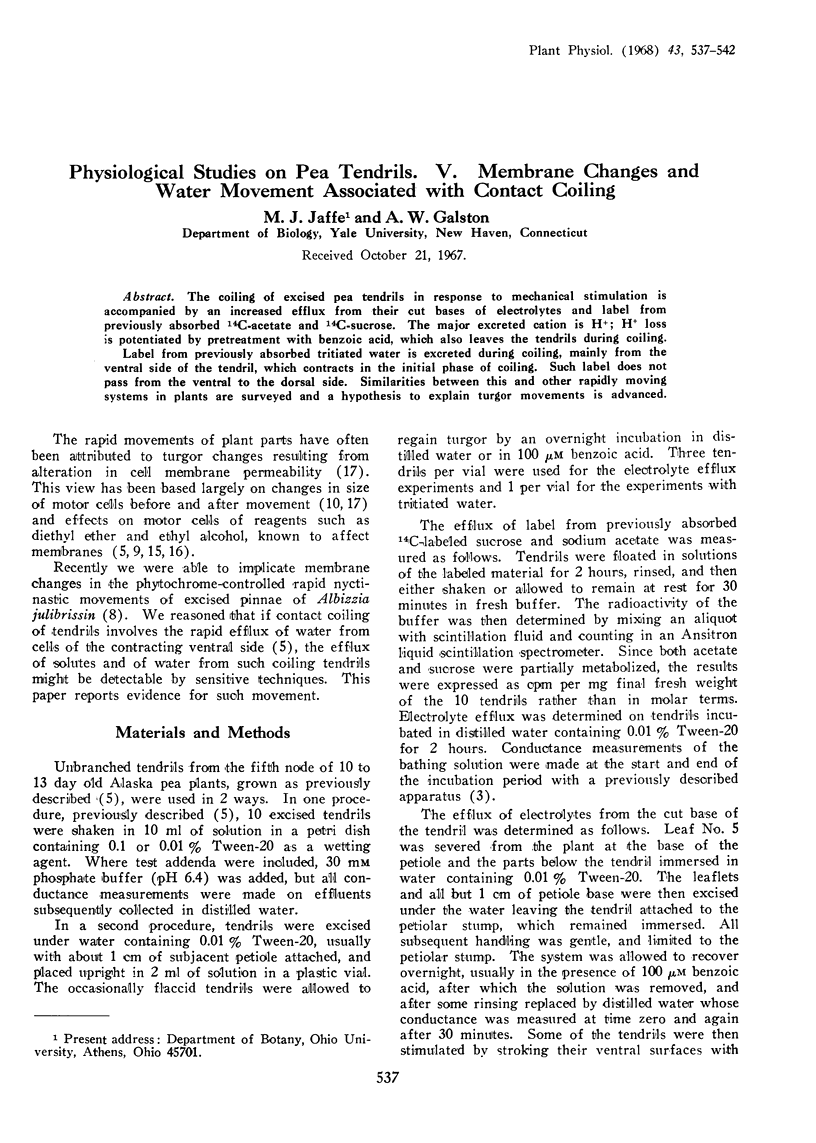
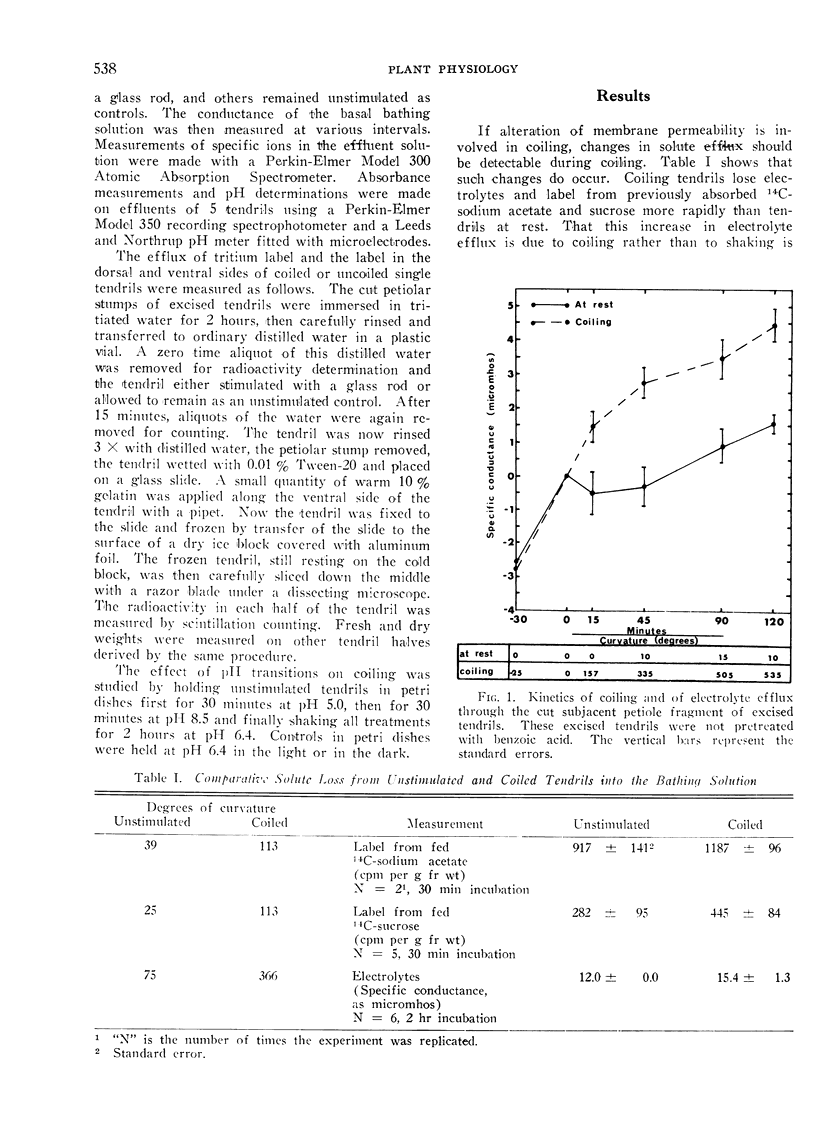
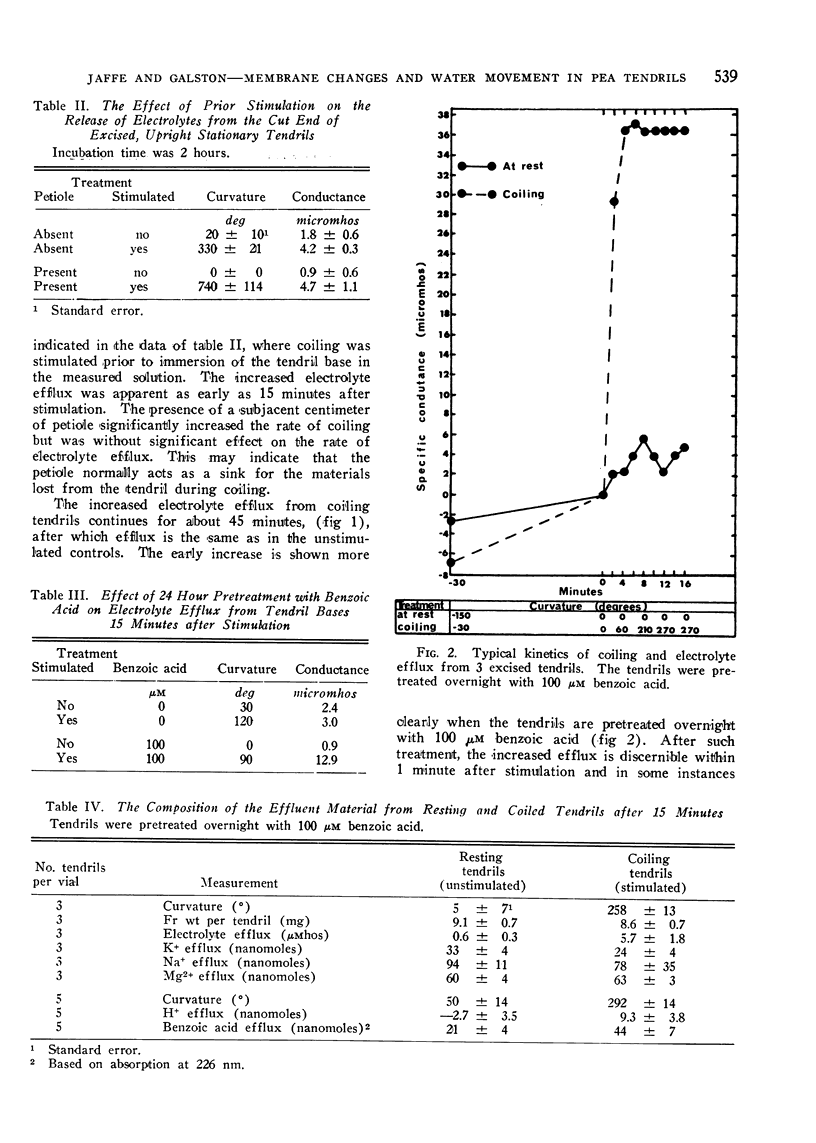
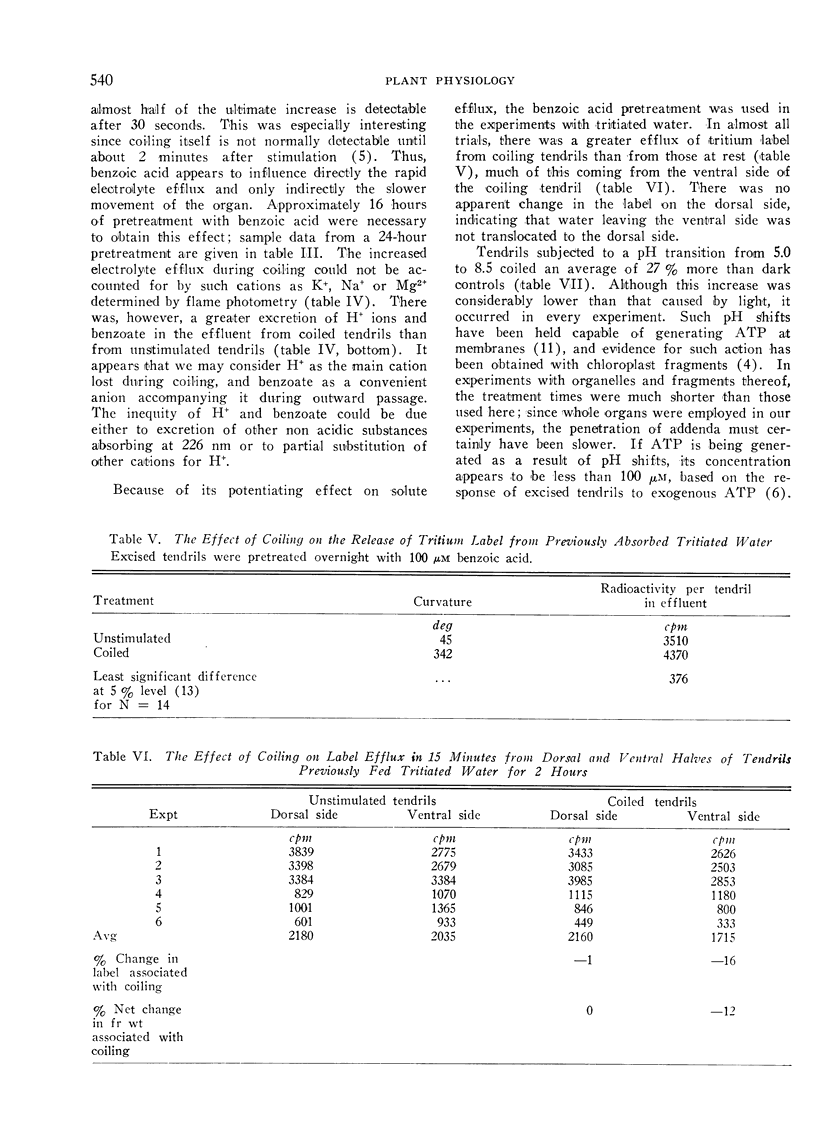
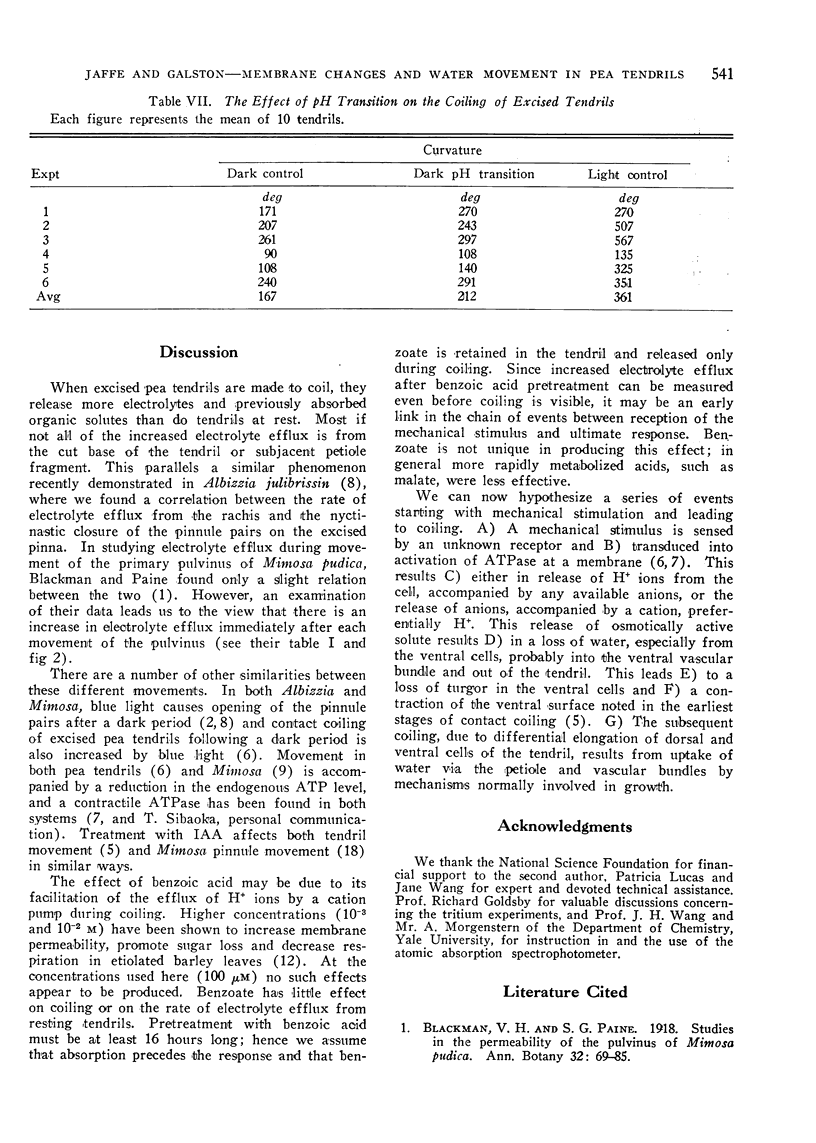
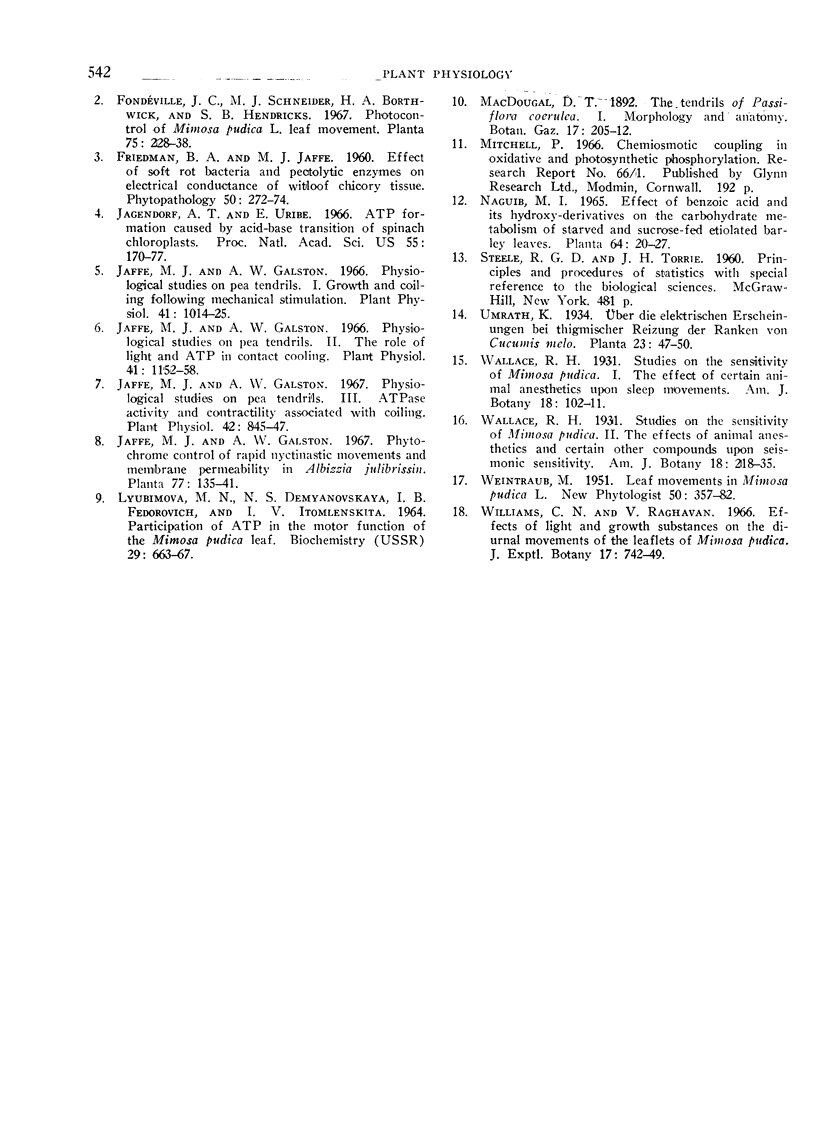
Selected References
These references are in PubMed. This may not be the complete list of references from this article.
- Jaffe M. J., Galston A. W. Physiological Studies on Pea Tendrils. III. ATPase Activity and Contractility Associated with Coiling. Plant Physiol. 1967 Jun;42(6):845–847. doi: 10.1104/pp.42.6.845. [DOI] [PMC free article] [PubMed] [Google Scholar]
- Jaffe M. J., Galston A. W. Physiological studies on pea tendrils. I. Growth and coiling following mechanical stimulation. Plant Physiol. 1966 Jun;41(6):1014–1025. doi: 10.1104/pp.41.6.1014. [DOI] [PMC free article] [PubMed] [Google Scholar]


